
- Home
- Format
- Language
- Narrative Type
- Publisher
- Abrams, Inc. (14)
- Assouline (27)
- Dark Horse (14)
- Dark Horse Books (9)
- Dark Horse Comics (22)
- Dc Comics (48)
- Easton Press (19)
- Folio Society (18)
- Harpercollins (28)
- Idw (14)
- Idw Publishing (16)
- Marvel (156)
- Marvel Comics (38)
- Rizzoli (10)
- Routledge (12)
- Scholastic (11)
- Subterranean Press (9)
- Taschen (38)
- The Folio Society (10)
- Walker Books (10)
- ... (2925)
- Subject
- Action & Adventure (2)
- Action, Adventure (2)
- Americana (4)
- Art (3)
- Art & Photography (40)
- Books On Collecting (17)
- Children's (6)
- Classics (3)
- Fantasy (6)
- Health & Fitness (3)
- History (13)
- Horror (5)
- Illustrated (4)
- Literature & Fiction (36)
- Literature, Modern (4)
- Military & War (12)
- Mystery, Thriller (2)
- Reference (5)
- Science Fiction (6)
- Series (9)
- ... (3266)
- Title / Series
Sadequain NaqvI -The Holy Sinner, Scarce, Reference Book Wt. 15.9 lbs Brand New


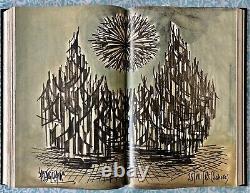

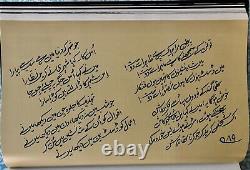
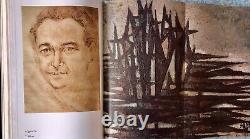

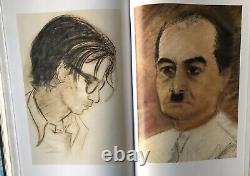
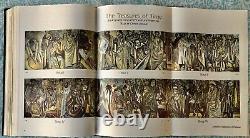
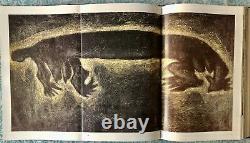
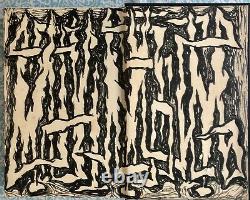
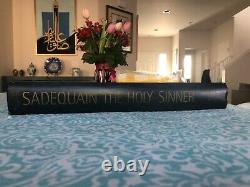


Abdul Hamid Akhund, et al. ; SADEQUAIN The Holy Sinner, Karachi: Mohatta Palace Museum in collaboration with Unilever Pakistan, 2003 - 625 pages.
First edition, one of only 1200 copies. Folio in d/w and slipcase.
It reflected the artist's existential preoccupations with human suffering underpinned by his famous notion of mystic figuration. The book is primarily based on the famous exhibition of paintings of Sadequain titled, "The Holy Sinner: Sadequain" which ended about fifteen years ago and was by far the largest-attended and longest-running exhibition in the history of Pakistani art. The title of the exhibition, "The Holy Sinner" was borrowed from the novel of the German Nobel prize-winning writer Thomas Mann.
Painstakingly curated by Hameed Haroon and assisted by Salima Hashmi, it traced the transformation of Sadequain's style from one of semi realism to profound allegory. This book is a tribute and celebration of this Pakistani artist's vitality, innovation, restless fervor and immense amount of energy.
The book of about 700 pages, weighing 12 kg, includes reproduction of some 400 of Sadequain's creations, supported by an anthology of critical commentaries by the artist's contemporaries and journalists including renowned artistic figures and critics. It contains essays on the great artist and plates of his paintings and sketches. The sections in the book consist of Photographic Essay, Critical Approaches, Recollections, Reproductions, Catalogue, Pictures at an Exhibition, Rubaiyat, Photo Epilogue, Afterward, Life and Works. The book is largest monograph in the region complied and produced to pay unprecedented tribute to a single artist, setting a new trend for paying tributes to artists in South Asia. Is large sized scarce Coffee Table Book with is hard cover binding with 620 pages of 18x11 inches & weighs about 15.9 lbs.
Sadequain was born in 1930, descending from a family of calligraphers. He was responsible for the renaissance of Islamic Calligraphy in Pakistan. He was one of the greatest calligraphers of his time who transformed the art of calligraphy into eye-catching expressionist paintings.
Sadequain was a master muralist and his murals adorn the halls at State Bank of Pakistan, Power House at the Mangla Dam, Lahore Museum, Aligarh Muslim University, Banaras Hindu University, Geological Institute of India, just to name a few. After Sadequain transformed the art of calligraphy into a mainstream art form, most of the known Pakistani artists followed Sadequain, and calligraphic art now dominates the art scene. Sadequain also painted in bold form the poetic verses of Ghalib, Iqbal and Faiz, which illustrate his love for classical literature. He belonged to the school of thought which enriched realism with lyricism.
Sadequain wrote thousand of quartets and published them. For example, his masterpiece rendition of Sureh-e-Rehman has been copied widely by many known painters of the modern era. Syed Sadequain Ahmed Naqvi, Tamgha-e-Imtiaz, Pride of Performance, Sitara-e-Imtiaz (Pakistani Awards), also often referred to as Sadequain Naqqash, was a world-renowned Pakistani artist, best known for his skills as a calligrapher and a painter. He is considered as one of the finest painters and calligraphers Pakistan has ever produced. Sadequain was responsible for the renaissance of Islamic calligraphy in Pakistan.He claimed that his transformation into a calligrapher was manifested by divine inspiration. He did not follow the tradition and created his own style of script.
His alphabets exude motion, mood, and paint vivid pictures of the message of the word. Sadequain claimed that many of his paintings especially after the seventies had been based on calligraphic forms to portray images of cities, buildings, forests, men, and women. Before Sadeqain, few painters had experimented with the medium in Pakistan. Sadequain is commended for bringing calligraphy into a mainstream art form, as most of the known Pakistani artists have followed Sadequain and calligraphic art now dominates the art scene. Sadequain also painted classical literature from the poetic verses of Ghalib, Iqbal and Faiz.
Sadequain Illustrated French Nobel Prize winning writer Albert Camus, Ghalib, Iqbal, and Faiz Ahmed Faiz on large scale. He worked on large murals for public buildings symbolic of the collective labor of humanity and his work was mostly donated to the public.
KARACHI: Sadequain: The Holy Sinner launched. KARACHI, Aug 9: The State Bank of Pakistan will convert its old building on I.
Chundrigar Road to a museum where some of the most prized works of Sadequain, after having been restored, will be put on display. Controversial and prolific, his remarkable career spanned three decades and witnessed a feverish flurry of creativity that resulted in several thousand paintings, etchings and drawings not to mention his giant murals which adorn the walls of important institutions in South Asia and the West. Perhaps the most honoured Pakistan artist of his era, he was a recipient of the Laureate Biennale de Paris, in addition to the highest national awards in his homeland. Even during his lifetime, his paintings were exhibited at major art venues across the world.The SBP governor said that the reason why the old building of the State Bank was being converted to a museum was that it would enable the young and budding artists of the country to have free access to the works of Sadequain. He observed that the it was the responsibility of Pakistanis to enrich the cultural heritage which had been passed on to them by their forefathers. He said that he had decided to put the murals of the State Bank on display at the Mohatta Palace Museum in the teeth of opposition on the condition that special visits of schoolchildren would be arranged. He paid tribute to the untiring efforts of the editors who had put the book together. He also appreciated the efforts by those who had organized the exhibition Sadequain: The Holy Sinner 1954 - 1987.
The largest-attended and longest-running exhibition in the history of Pakistani art The Holy Sinner: Sadequain came to an end at the Mohatta Palace Museum. The exhibition, featuring more than 200 non-calligraphic works of the artist, got under way in the 16 rooms of the Mohatta Palace Museum on Feb 28, 2002. The organizers of the exhibition said that more than 85,000 art lovers, as well as 160 schools, had come to see Sadequains works, whose commercial worth, at a conservative guess, was around Rs500 million. They said that they had to extend the exhibition for one more week on overwhelming public demand during which more than 10,000 people had visited the Mohatta Palace Museum. Salima Hashmi and Hameed Haroon were the co-curators of the exhibition.
Mr Haroon spoke about those who had played an important role in making the exhibition possible and putting the book together on a voluntary basis. He named them one by one and appreciated their efforts. He also talked about the book, which reproduces some 400 of Sadequains important creations, supported by an anthology of critical commentaries by the artists contemporaries and friends. He added that a film was being prepared on the life and works of Sadequain.Shooting for the film, he added, had been completed and it was in the production stage. He said that four documentaries on Sadequain would also be prepared.
The item "Sadequain NaqvI -The Holy Sinner, Scarce, Reference Book Wt. 15.9 lbs Brand New" is in sale since Saturday, March 14, 2020. This item is in the category "Books\Antiquarian & Collectible". The seller is "ntiqueboutique" and is located in Auburn, Washington.
This item can be shipped worldwide.- Modified Item: No
- Country/Region of Manufacture: Pakistan
- Topic: Art History & Criticism
- Binding: Hardcover
- Region: Asia
- Illustrator: Sadequain
- Author: Sadequain
- Subject: Art & Photography
- Original/Facsimile: Art works of Sadequain
- Language: English
- Publisher: Hamdard Press
- Place of Publication: Karachi , Pakistan
- Special Attributes: 1st Edition

